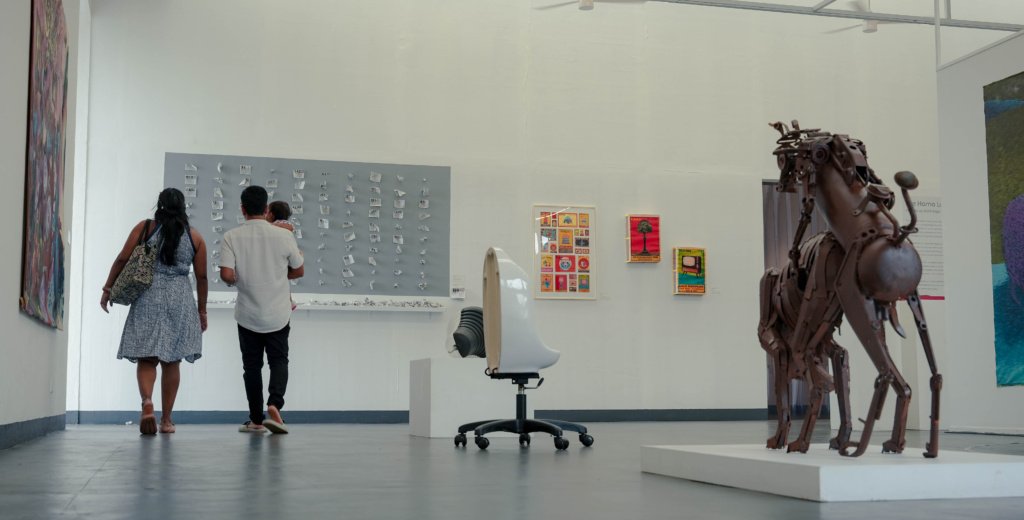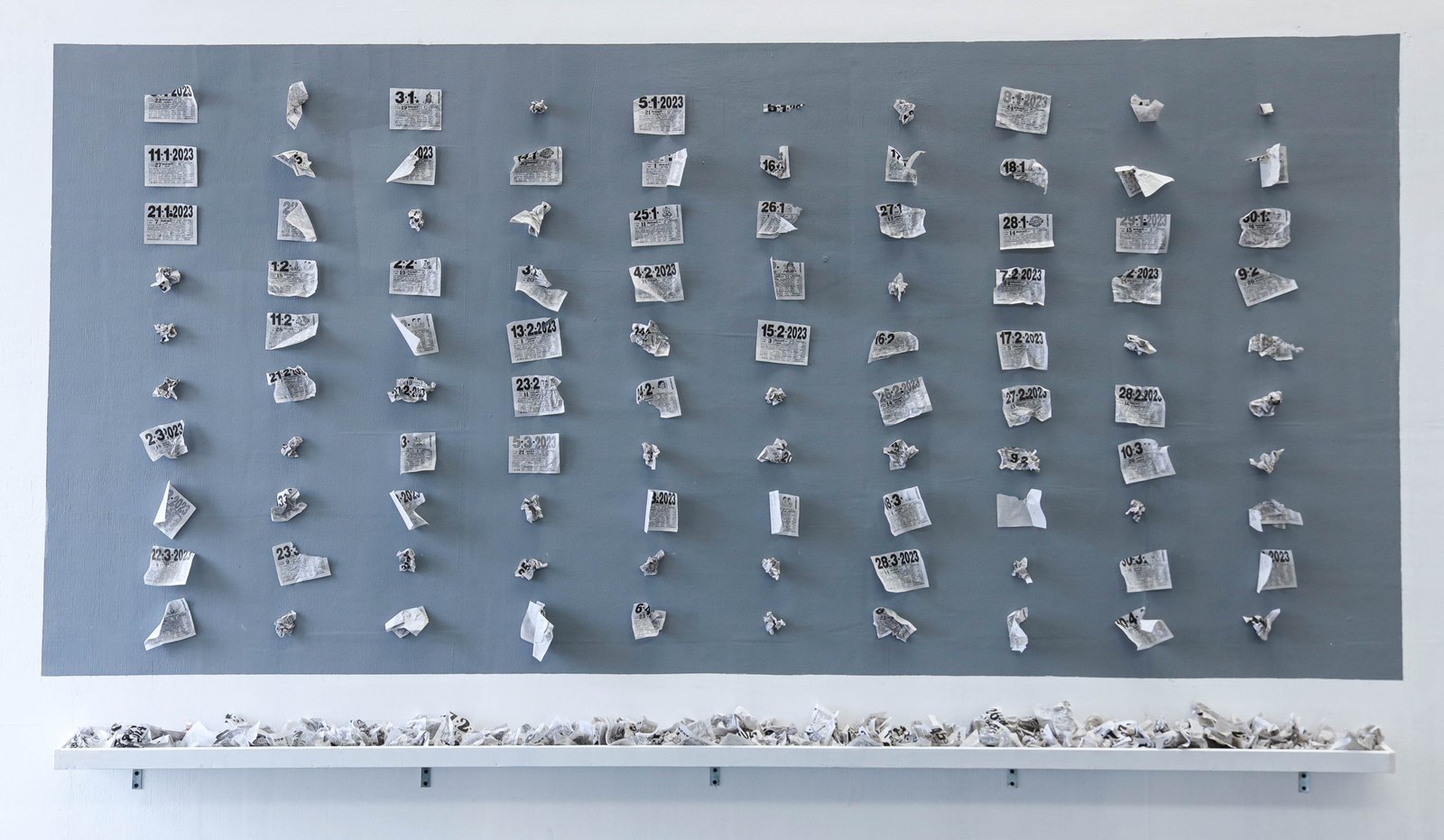Tear It Apart: Reconnecting with the Joy of Being Present
A recounting of Oviya Manivannan’s time exhibiting at the Museum of Goa
I am Oviya, a 22-year-old artist, and I recently had the privilege of exhibiting my work at the ‘Homo Ludens: Art of Play’ exhibition at the Museum of Goa. My name literally means “painting” in Tamil. With a name like that, you’d think I’d been destined for a life in art, right? Well, sort of. I’ve always loved painting and being creative, but my journey into contemporary art has been a more recent (and slightly chaotic) adventure. The piece I exhibited at the Homo Ludens: Art of Play exhibition at the Museum of Goa, titled “ஒரு கிழி (Oru Kizhi), is one of my first steps into this world, and it’s been an incredibly special one.
This artwork takes inspiration from something that’s a part of almost every Tamil household: the Tamil daily sheet calendar. Growing up, these calendars weren’t just for tracking dates—they were a daily ritual. My favorite part? Tearing off the sheet every morning. As a kid, it wasn’t about organization or routine; it was pure play. I’d rip that sheet, throw it away, and feel oddly satisfied. Fast forward to adulthood, and I’m still doing it. Only now, I’ve started asking myself why.
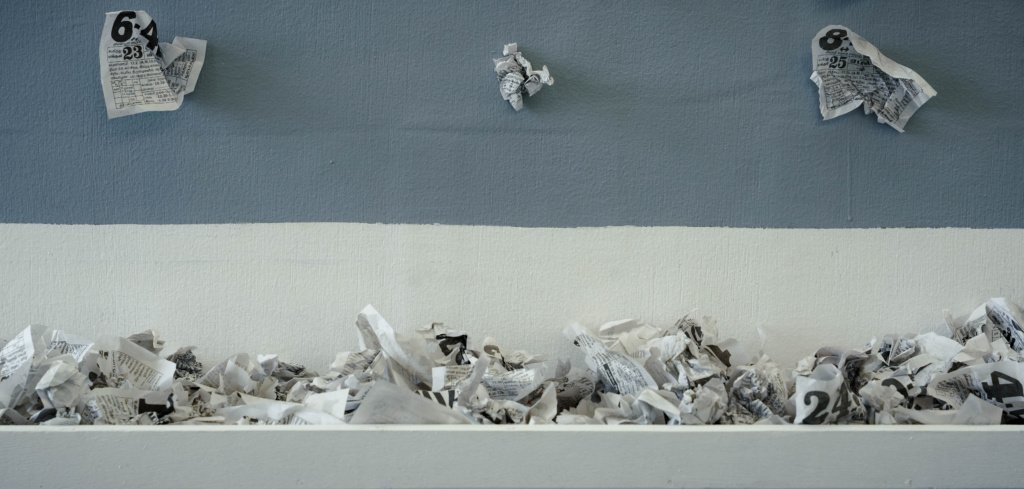
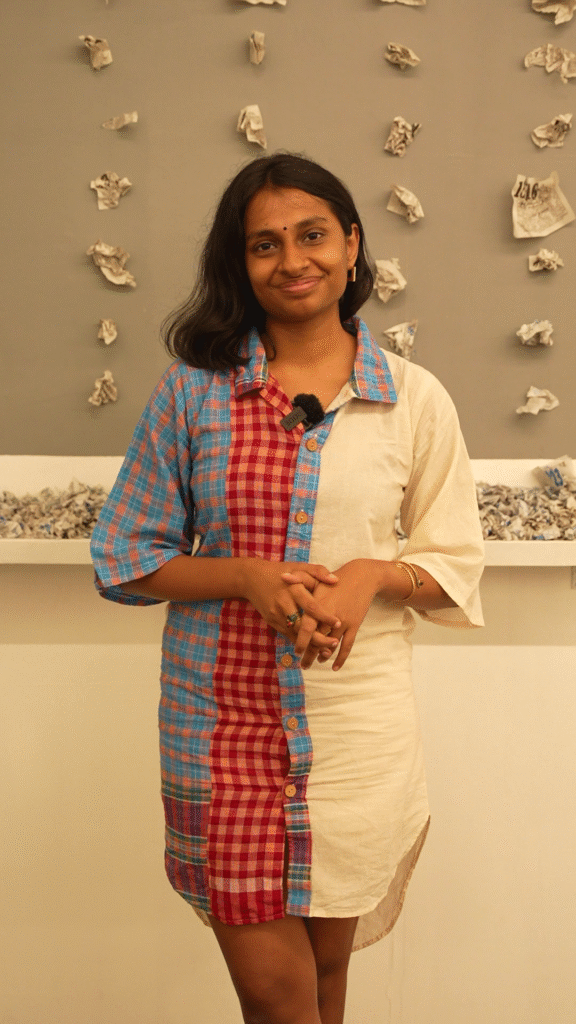
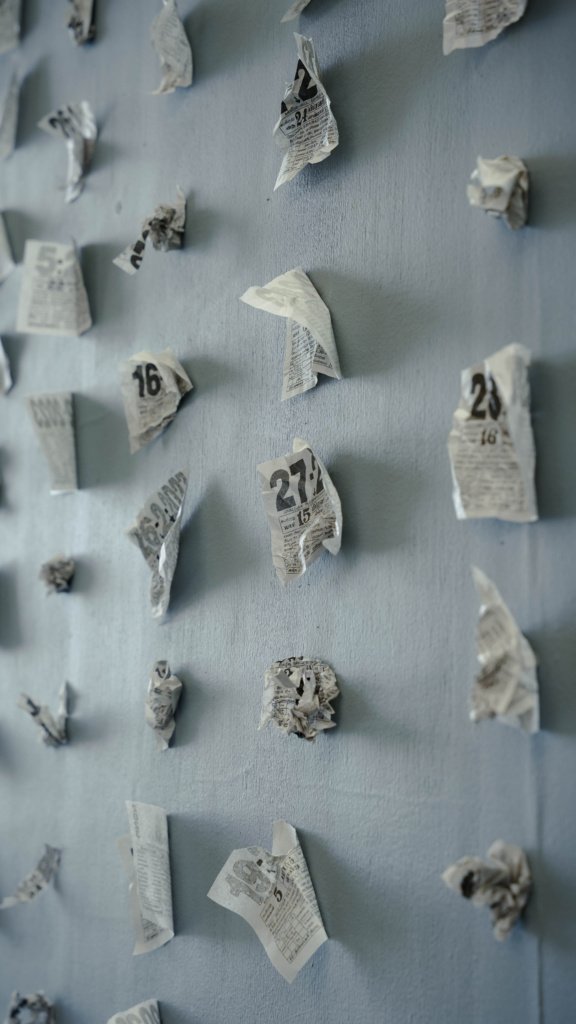
The Story Behind “ஒரு கிழி”
It all started in 2023 when, as a graphic designer, I decided I wanted to redesign the Tamil daily sheet calendar. But as I researched, talked to people, and reflected on my own habits, I realized something surprising: I didn’t love the calendar for its practicality. It was the act of tearing that mattered to me. That small, tactile moment of play had stayed with me all these years.
So, I began collecting my torn sheets. Over time, I noticed how the way I tore the paper reflected my mood. Some days, the tear was calm and precise; other days, it was messy and aggressive. It was a simple but profound ritual, a way to let go of yesterday and ground myself in the present. This realization became the foundation of “ஒரு கிழி.”
At the exhibition, my torn calendar sheets became a participatory installation. Visitors could come, engage with the act of tearing, and experience this seemingly mundane ritual in a new way. Some saw it as a playful moment; others found it reflective, even meditative. What I loved most was hearing how people rethought something as simple as a calendar—seeing it not as just paper, but as a space for interaction, reflection, and joy.
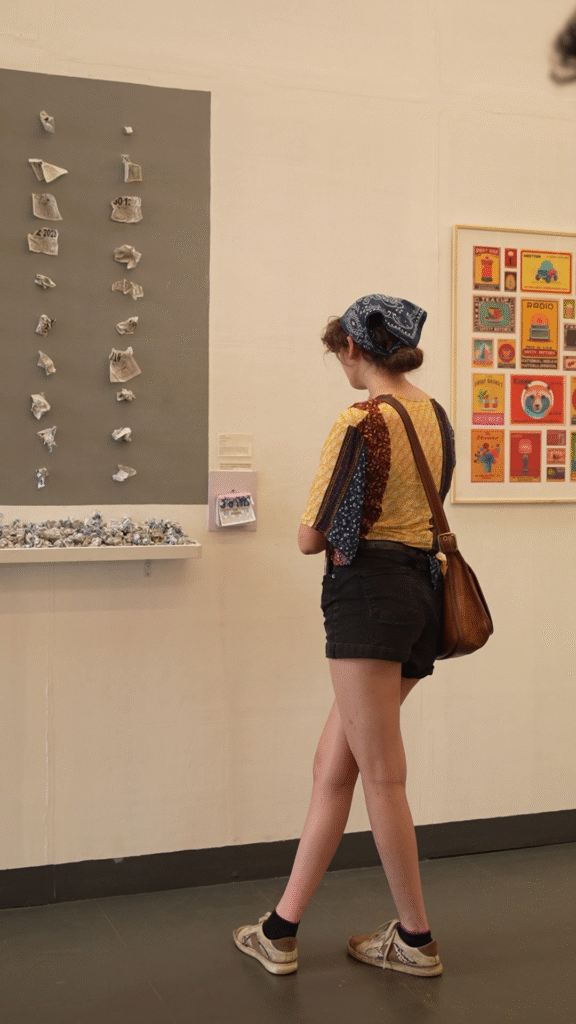
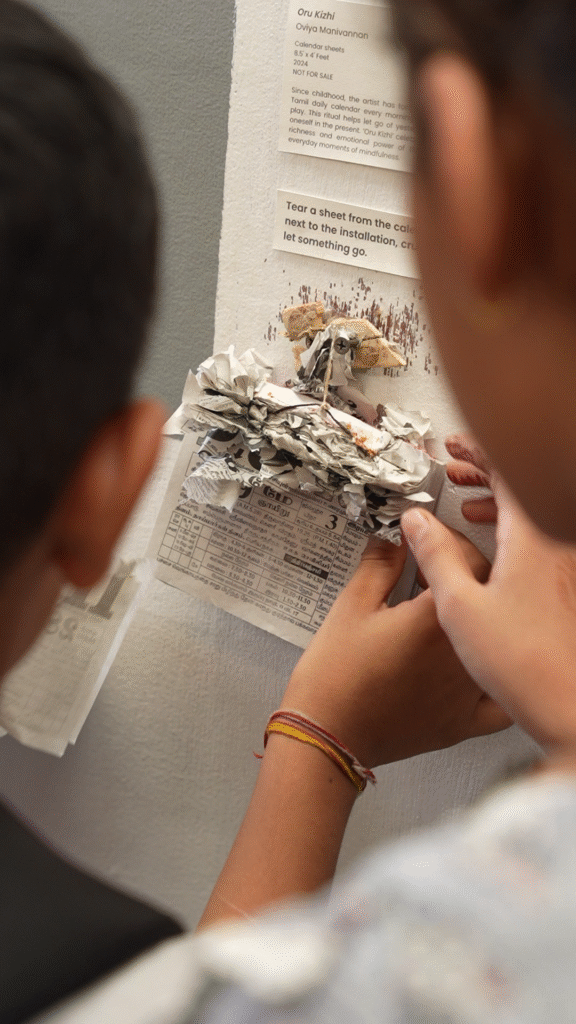
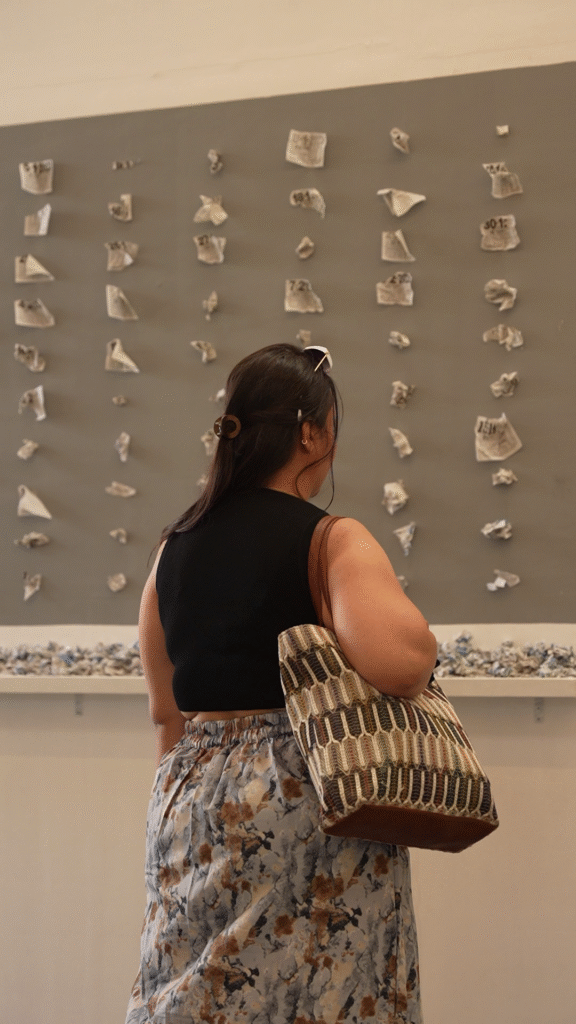
The Play Circle: Tear it Apart, No Strings Attached
To bring my work to life in a new way, I hosted a Play Circle called “Tear It Apart – No Strings Attached.” This wasn’t a workshop about technique or skill; it was all about tearing, creating, and playing just for the fun of it.
We started with mindless tearing. Just ripping paper with no purpose. It was amazing to see how something so simple could light people up. Then, we moved on to creating collages using the torn pieces. The goal wasn’t perfection; it was pure play. And then came the twist: at the end, participants tore their creations apart again. (I didn’t tell them this part beforehand—because where’s the fun in ruining the surprise?)
The reactions were priceless. Adults were hesitant at first, saying things like, “I’m not creative” or “I can’t do this.” But as soon as they got started, they couldn’t stop. One 50-year-old participant said it had been decades since he’d done anything like this, and he couldn’t believe how freeing it felt. Another, an architect, admitted she was so focused on making her creation perfect that when I asked her to tear it, she realized she’d completely missed the point: play doesn’t need perfection.
Kids, on the other hand, were all in. While I worried they’d be upset about tearing their work, they surprised me by embracing it wholeheartedly, reminding me how naturally playful and unattached kids are. Their enthusiasm showed how important it is for adults to reconnect with this spirit of carefree play.
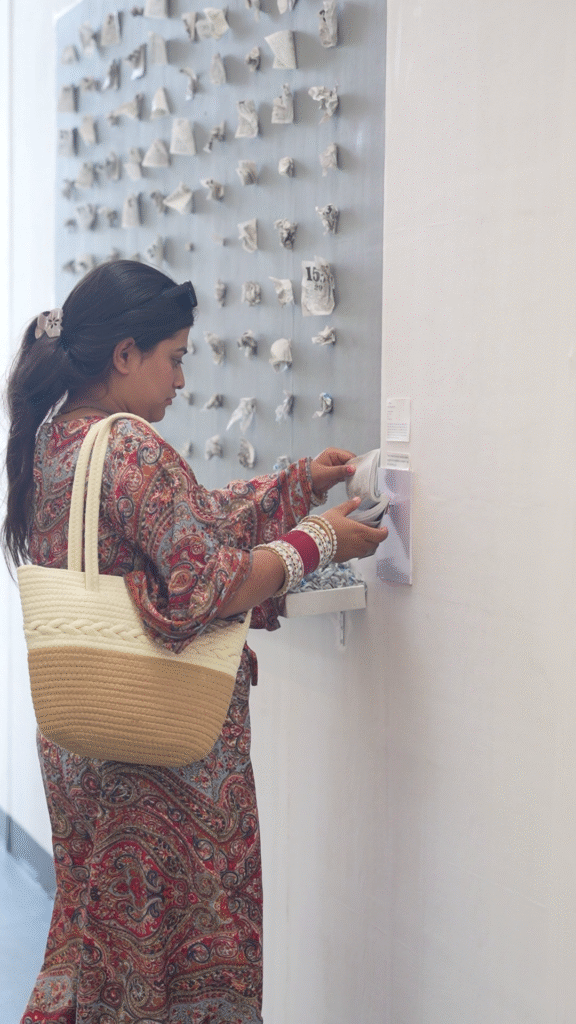
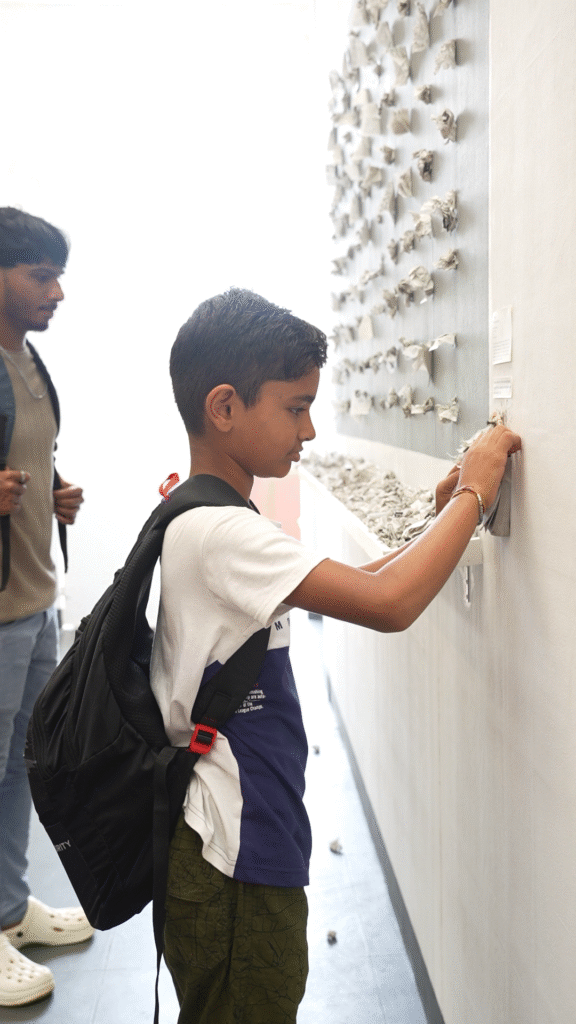
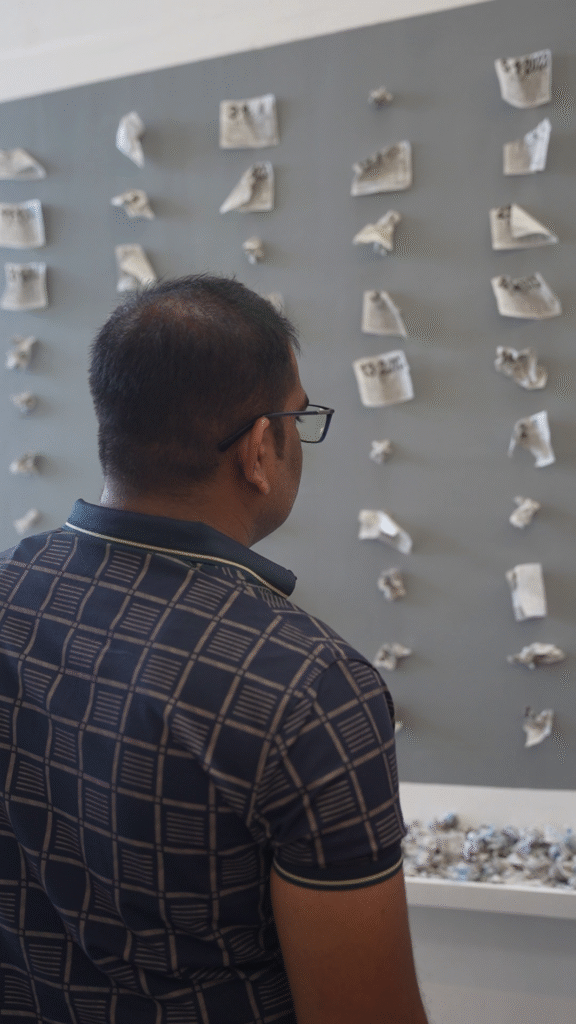
Reflections on the Journey
This entire journey, from creating “ஒரு கிழி” to hosting the Play Circle, has been incredibly fulfilling. Art, for me, is about making people pause, reflect, and connect with themselves and the world around them. Seeing people from different cultures, ages, and backgrounds engage with my work, many of whom didn’t even know what a Tamil daily sheet calendar was, was deeply rewarding.
The Museum of Goa provided a rare space for such an artwork, something participatory, reflective, and not traditionally sellable. Their vision of making contemporary art accessible is inspiring, and I’m grateful for the opportunity to showcase my work in such an inclusive environment.
At its heart, this project is a reminder of the importance of small moments of play in our lives. We often get caught up in doing things for a purpose or a goal, forgetting the joy of simply doing something for the sake of it. Playgrounds are in the present. It allows us to create, explore, and release without expectations. My hope is that “ஒரு கிழி” and the Play Circle inspire people to find these little moments of joy in their daily lives, whether it’s tearing a sheet of paper, making a collage, or simply playing for the fun of it.

